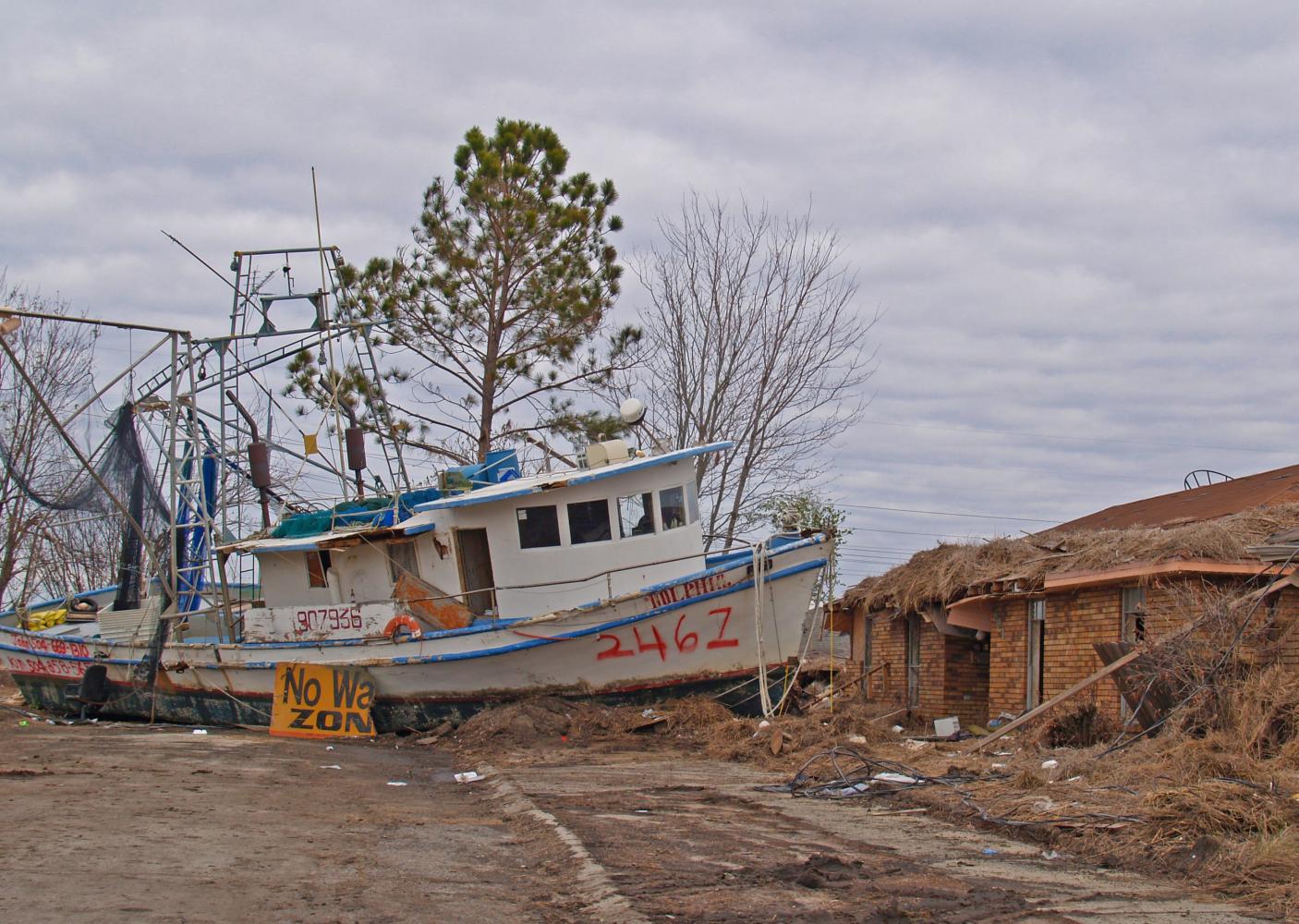But in a world of warming temperatures, rising seas, and coastal storms that are forecasted to become more intense and destructive, many of these areas—including major population hubs like New York City, Miami, and New Orleans—are beginning to feel the effects.
Now, demographer and Associate Professor of Population Studies (Research) and Environment and Society Elizabeth Fussell is investigating a deceptively simple question: in the United States, do hurricanes encourage people to move away from coastal counties, or not?

Hurricanes reshape communities in complex and often unforeseen ways. Photo: Gabe Raggio/Pixabay
Her answer so far? Sometimes, yes... and sometimes, no.
"What we find is that the pre-disaster population trend—in other words, whether a county was growing, declining, or staying relatively stable before a hurricane event—is far more predictive of what will happen after a hurricane than the hurricane itself," she says. "There are drivers of population change and migration that are far more powerful than hurricanes."
Hurricanes, however, do tend to make a place more diverse.
For instance, while teaching at Tulane University, Fussell found that Hurricane Katrina brought an entirely new population to New Orleans: Latino immigrants, most of whom had been living elsewhere in the U.S. and performing many different jobs, arrived in the city after the storm to do construction work.
"Before Hurricane Katrina, the Latino population of the New Orleans metropolitan area had been about three percent, and afterward it had almost doubled. They have maintained that share of the population over the 14 years since Katrina," she says. "That's an interesting dynamic that is really underappreciated by people who study disasters. We typically think about how disasters might displace people, but we don't consider how they may actually draw people to the place that was affected."
If a place maintains or grows its population after a disaster, it is often because current policies and practices generally encourage people to stay where they are. For instance, homeowners' insurance policies generally cover rebuilding a stricken home on the same plot of land, not recouping the home's value and rebuilding somewhere safer.
Moreover, government-run home buyout programs don't specify where displaced homeowners should resettle. And, as Fussell explains, people often live by the water simply because they want to—so they may take the buyout, and then move to a similarly vulnerable place.
"If we are trying to move people out of harm's way, we need to understand the limitations of current recovery and adaptation approaches, which encourage people to remain in place," she says. "We need to tweak those approaches to move people into safer places. This is challenging because residents have invested in their homes and built relationships in their communities. Homes and communities are not easily replaced."
Disaster recovery policies also have a homeowner bias that allows some people to stay in their homes while others are priced out of housing markets.
As Fussell explains, white residents across America are much more likely than other racial groups to own homes, rather than rent. This inequity plays out in a variety of ways, but its impact is felt especially strongly after disasters. In New Orleans after Hurricane Katrina, homeowners were much more likely to return and rebuild their homes, while renters were unable to afford inflated rents in a slowly recovering rental market. This partially accounts for black residents' lower rate of return to New Orleans after Hurricane Katrina, together with historical patterns of segregation into lower-lying, and therefore more flood-prone, neighborhoods.
"What social scientists can do is show how inequitable the current situation is," says Fussell. "We can show that those people who are the most vulnerable to displacement or other social impacts of climate change and disasters do not have the safety net that they need to recover quickly and completely."
In Fussell's view, policymakers need two things in order to fix these issues: disaster recovery policies that meet the housing needs of both homeowners and renters, and climate adaptation research that shows where the existing policies will likely fall short.
"The impacts of climate change on human well-being occurs unequally across members of our society, and it tends to reinforce existing inequalities. We already have policy mechanisms to redress many of these issues," she concludes. "It's not like we have to reinvent the wheel to solve these problems. What we need to do is fine-tune the wheel so that we can incrementally address issues that don't only have to do with climate change, but have to do with everyday social inequalities."